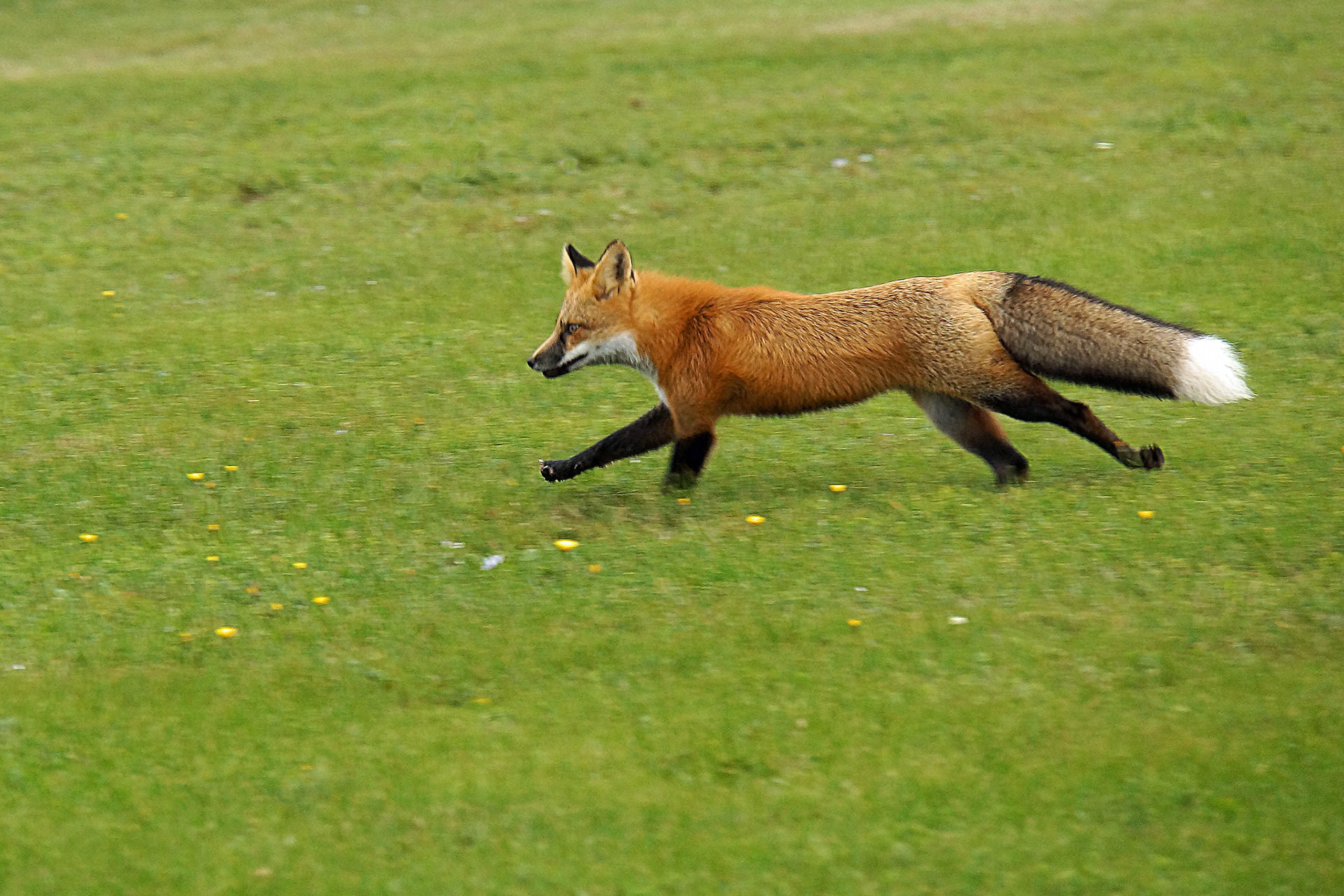The Sly Fox

In my experience, the best time to see the mysterious red fox is at twilight. Slinking along the forest’s edge, the red fox is a magnificent sight and hard to take your eyes off of. On the hunt and watchful, the fox’s eyes pierce the dim light with an overwhelming intensity. With the extirpation of the gray wolf, the fox is one of Long Island’s top predators, and all animals in the vicinity are immediately at alert with his arrival.
The red fox is common on the South Fork but surprisingly hard to spot. Due to hunting and habitat development over the last few hundred years, Long Island has lost its top predators, allowing the red fox to significantly expand its range and increase in population size. Unlike our gray fox, whose population has been greatly reduced due to settlement and development, the red fox is a generalist — able to thrive under many different environmental conditions and coexist with humans. Even so, they’re secretive, and you are lucky to get a glimpse of one lurking in your backyard or crossing the street.
They are hard to confuse with any other animal. They are medium-sized, weighing eight to 15 pounds, and measuring 34 to 44 inches from head to tail. Their tail is over half their body length! The red fox comes in many different color morphs, but on the East End, they are orange-red with black legs and ears. The underbelly, chin, and tip of their bushy tail are white. The tail and muzzle may have black coloring as well.
The animals are generally nocturnal or crepuscular, meaning they are active during dawn and dusk. However, they may hunt during the day, especially in the winter. Seeing one in daytime is not necessarily cause for alarm. (Only if the fox is exhibiting abnormal behavior should you call a wildlife rescue center). This species is an omnivore, feeding on fruit, berries, insects, rabbits, birds, small rodents, and even carrion. They have incredibly good hearing and can detect prey gnawing on food and rustling in the leaves. The red fox hunts prey by stalking it and pouncing. One caught, foxes will swallow small prey whole or store food underground for later consumption.
Red foxes form long-term pair bonds, but they hunt alone. It is uncommon to see multiple at once unless they are pups. Both parents care for the four to 10 pups, or kits, that are birthed in underground dens from spring until fall, when young then head off on their own. Males will go off in all different directions, but females will occasionally stay with their parents for several years to assist with the next litter.
At times, there are conflicts between people and foxes due to their proximity. Foxes are known for raiding garbage cans, taking small outside pets and chickens, and denning under houses and sheds to spend the winter and raise their pups. For this reason, all outdoor cans and pens should be tightly secured and completely covered with fencing. If you are worried about foxes denning on your property, you can take precautionary measures by filling in any openings or old mammal burrows you see. But, considering that they don’t cause any harm, enjoy the wonder of watching the fox family grow up!
Foxes naturally fear people, which makes them tricky to spot. But if you wake up early or take an evening walk in the forest, in a field, along the dune swales of Long Island, or even in your own backyard, you may just see the sly red fox out on the hunt. In all the excitement, make sure to keep your distance and appreciate this wild canid in its natural habitat.
Rachel Speckenbach is an environmental educator at The South Fork Natural History Museum & Nature Center and has worked as a field biologist in previous years.



